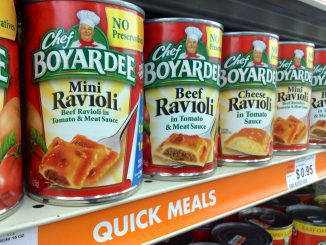
When the headlines are not filled with allegations of various types of collusion with the Russians or who has been accused of (or is apologizing for) sexual harassment or abuse of power, the tax plan has caught people’s attention.
While the debate about corporate tax rates was swirling in the halls of Congress, I coincidentally was watching a docudrama, “The Men Who Built America.” Among them were the American Triumvirate of John D. Rockefeller, Andrew Carnegie, and John Pierpont Morgan.
At 13, Carnegie started working and learning various railroad jobs. In doing so he realized that railroad bridges were the next big thing, so he started Keystone Bridge Company. With the Lucy blast furnace, his company doubled the average pig iron production (642 tons per week). In creating vertical management that controlled, writes Larry Schweikart, “every aspect of product development, from raw materials to manufacturing to sales,” the former penniless immigrant became America’s leading steelmaker. Counter to commonly held practices, Carnegie advised: “Put all your eggs in one basket, and watch that basket!”
John D. Rockefeller controlled 80 percent of the kerosene market by the 1880s. He eventually controlled 90 percent of the refined oil business, and muckraker Ida Tarbell, for one, believed his Standard Oil to be the “meanest monopoly known to history.” Rockefeller indeed wanted to absorb competition, yet he admitted that competitors, in some form, would always emerge. To Rockefeller, Standard Oil was “refining oil for the poor man,” so he might be able to buy it “cheap and good.” Meanwhile, his wealth grew exponentially to unheard amounts by modern-day standards. Eventually, an aging Rockefeller and Carnegie seemed to be in a philanthropic competition.
The son of an investment banker, J.P. Morgan was not a “rags-to-riches” story. He did change business practices, however. After the Panic of 1873, Morgan rescued many subsidized and corrupt railroads. He introduced them, as Schweikart writes, to “modern accounting methods and line-and-staff managerial structures” — a “visible hand” that restored profitability. Morgan was so successful that after the economic Panic of 1893 he had negotiated a bailout and provided 3.5 million ounces of gold (at $17.80 an ounce) for the U.S. Treasury to avoid national bankruptcy.
Charles Pillsbury, Henry Heinz, Joseph Campbell, Isaac Singer, William Proctor and James Gamble were successes in other industries.
Another titan was James B. Duke of North Carolina, the innovative founder of American Tobacco Company. To Duke, one had to spend money to make money to do something worthwhile. The key was to “learn how to spend it.” Initially he was criticized for his new-fangled method of making cigarettes by machine. Competitors predicted his bankruptcy within a year. By that time, however, he was buying up his critics.
One of the keys to Duke’s success was also his ability to locate and nurture talent. In particular, he was interested in hiring ambitious prospects, with an ability to learn. He gave his hires responsibilities and let them make mistakes. But making the same mistake was unacceptable.
Duke also implemented a version of employee professional development. He would often ask employees questions about the business. An incorrect answer was not a problem. But one knew that Duke would ask the question again at a later date. The ones who had not learned the answer by the second time were “marked men.”
Like Carnegie, Duke had knowledge of his industry from the ground up. He had worked the most menial jobs in the industry to being the industry’s head.
Duke also preferred to hire potential workers and leaders from rural areas. In a more eloquent statement that predated Hank Williams Jr.’s “A Country Boy Can Survive,” Duke once said: “The country boy can come to town and soon learn all the town boy knows, but the town boy can never get all that the country boy has.”



